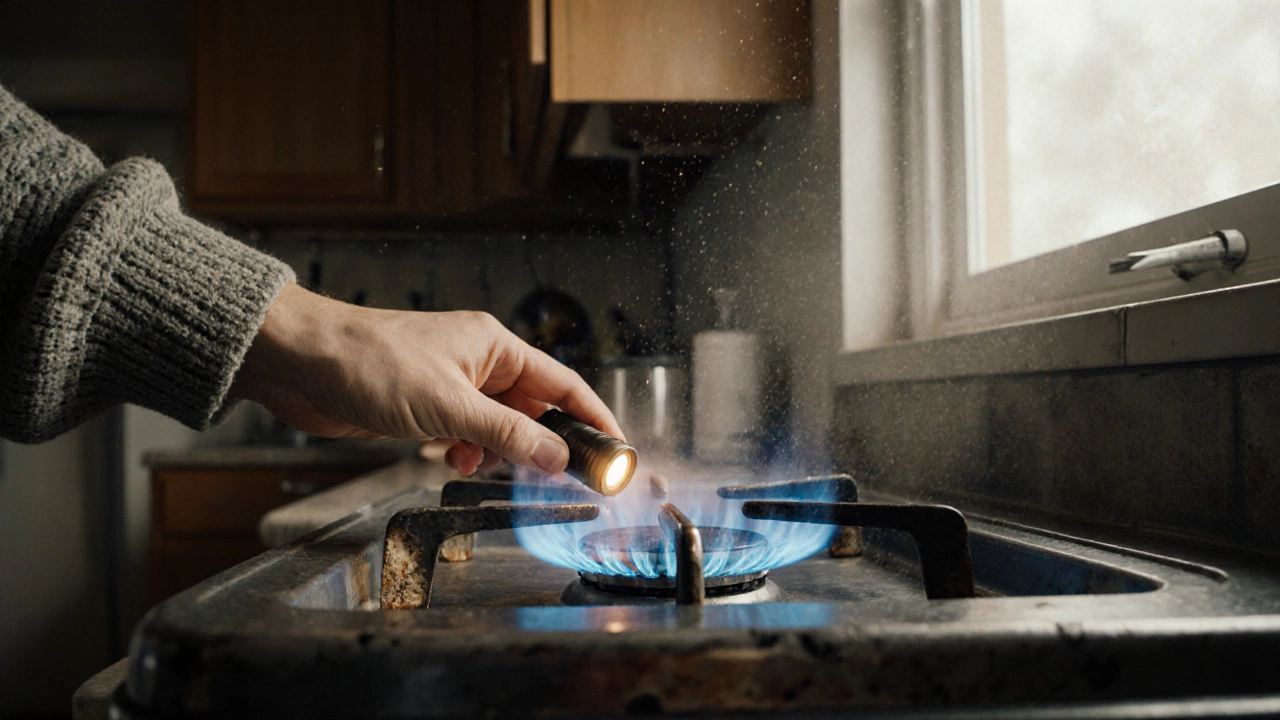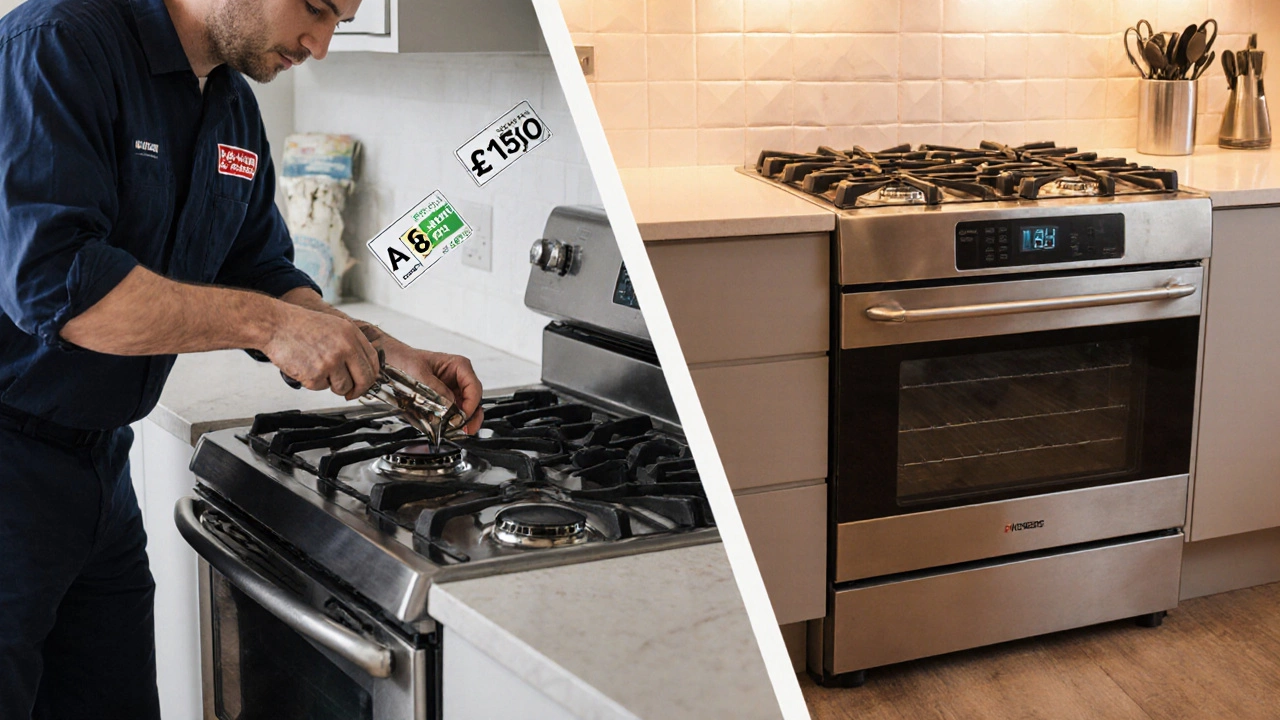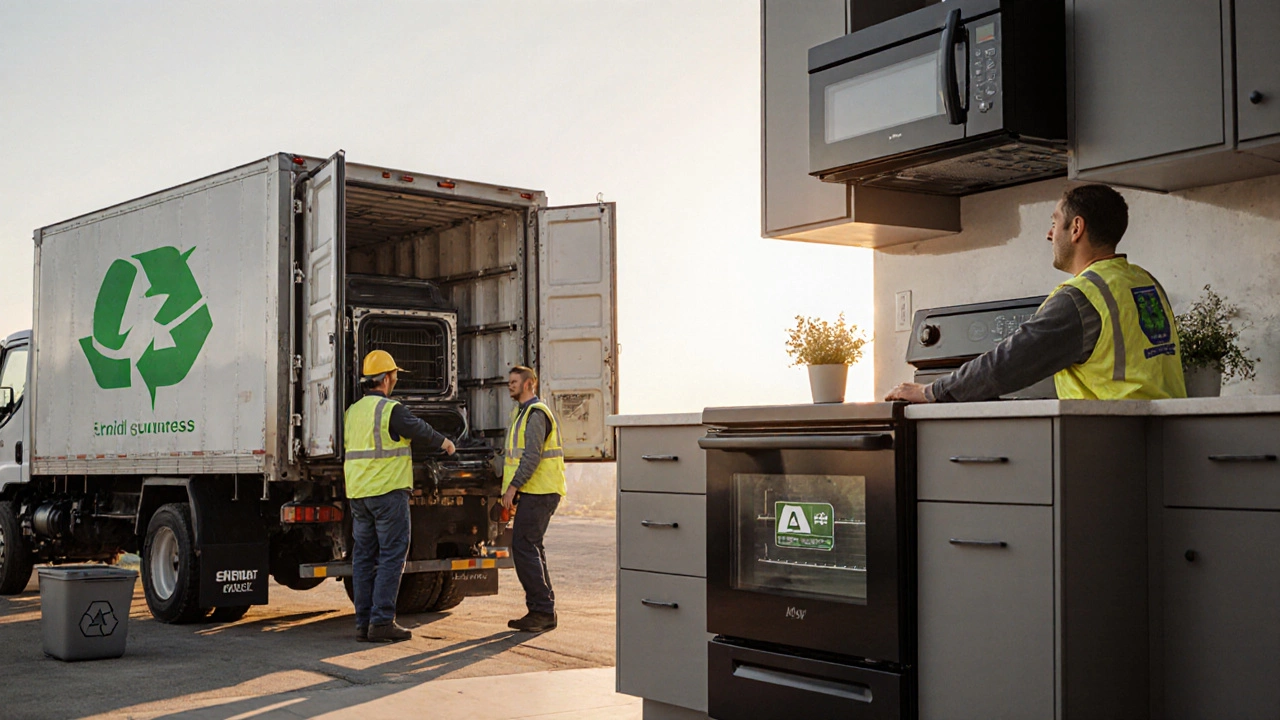
- 12 Oct 2025
- Gideon Thornton
- 0
Stove Repair vs Replacement Calculator
Your Stove Situation
When your stove has been heating meals for a decade, the question pops up: is it worth fixing it or should you buy a new one?
Below we’ll break down the factors that matter most - money, safety, energy use and the planet - so you can decide if a repair is a smart move or if it’s time to say goodbye.
Assessing the Condition
The first step is a quick visual and functional check. Ask yourself:
- Does the stove turn on reliably?
- Are any burners or heating elements flickering, taking longer to heat, or making strange noises?
- Is there visible rust, cracked glass, or a broken ignition switch?
If the answer is "yes" to any of these, you probably need a professional opinion. A qualified appliance repair technician can run diagnostic tests and let you know whether a single part replacement will solve the problem.
Cost Comparison: Repair vs Replace
In the UK, a typical gas stove repair - say swapping a faulty burner - runs between £80 and £150, parts included. An electric stove repair is usually a bit pricier, £100‑£180, because the heating elements can be costlier.
By contrast, a brand‑new electric stove or gas stove in 2025 starts at around £350 for a basic model and can top out at £1,200 for premium units with convection ovens and smart controls.
| Option | Typical Cost | Pros | Cons |
|---|---|---|---|
| Single‑part repair | £80‑£180 | Low upfront spend, retains familiar layout | May not solve underlying wear, limited efficiency gains |
| Full replacement (budget model) | £350‑£600 | New warranty, better energy rating, modern features | Higher initial outlay, need to fit new size |
| Full replacement (premium) | £800‑£1,200 | Top‑tier efficiency, smart connectivity, longer lifespan | Significant cost, may be overkill for occasional cooks |
If the repair cost climbs above half the price of a comparable new unit, replacement usually makes more sense - especially when you factor in the upcoming energy bills.
Safety Considerations
Age alone isn’t a death sentence, but a 10‑year‑old stove can develop hidden hazards:
- Gas leaks: Old connections may corrode, leading to dangerous leaks. A faint smell of gas or a yellow flame is a red flag.
- Electrical faults: Frayed wiring can cause short circuits or even fires.
- Broken glass or cracked doors: Shards can cause cuts, and compromised doors can let heat escape, increasing cooking time.
Because safety issues often require specialist tools, a DIY fix is risky. A professional inspection is the safest route. If a safety defect is found, most reputable repair services will advise replacement - that’s a good sign you’re not being sold a pointless fix.

Energy Efficiency & Running Costs
Modern stoves are far more efficient than models from 2015. The UK’s energy efficiency rating system gives new appliances an A‑rating (up to 30% less gas or electricity use) compared with many older units that sit at D or E.
Let’s run a quick scenario: a 10‑year‑old gas stove uses about 1.2kg of gas per hour on high heat. An A‑rated replacement might drop that to 0.9kg - a saving of roughly £30‑£40 a year on a typical household bill. Add that to the repair cost and the numbers tilt toward a new stove faster than you’d think.
Environmental Impact: Recycle or Dispose
Ending a stove’s life doesn’t have to mean a landfill. Many UK councils run recycling programs for large appliances. Metal frames and glass are highly recyclable, and even the electronic controls can be salvaged.
If you choose a new stove, ask the seller if they offer a take‑back service. Some manufacturers will pick up your old unit for free, ensuring it’s properly dismantled and recycled - a win for the planet and often a small incentive toward purchase.
When Replacement Makes Sense
Here are the tell‑tale signs that a new stove is the smarter move:
- Repair estimate exceeds £250 (roughly half the price of a new basic model).
- Multiple components have failed - e.g., two burners and the oven light.
- Safety issues are identified, especially gas leaks or exposed wiring.
- Your current stove has a low energy rating (D/E or below) and you’re keen on cutting bills.
- You’re remodeling the kitchen and the new layout calls for a different stove size or type.
If none of those apply, stove repair may still be worth a shot, particularly if you love the look of your current model or have a tight budget.

Steps to Get a Reliable Repair Quote
To avoid surprise costs, follow this simple checklist:
- Document the problem: note which burners misbehave, any error codes, and any visible damage.
- Call at least two local appliance repair technicians. Ask for a written estimate that separates labour and parts.
- Check credentials: look for a Gas Safe Register number for gas work, and ensure electrical repairs are covered by an OFTEC‑registered electrician.
- Ask about warranty on the repair - a good service offers at least 12months on parts and labour.
- Compare the quote to the replacement cost table above and factor in any potential energy savings.
Having a clear paper trail helps you negotiate and decide confidently.
Bottom Line
There’s no one‑size answer, but a quick cost‑vs‑benefit test does most of the heavy lifting. If the repair is under £150, the stove is in decent shape, and safety checks out, fixing it is a pragmatic, eco‑friendly choice. When the repair bill nudges past a quarter of a new stove’s price, or safety issues surface, swapping for an A‑rated replacement will save money in the long run and keep your kitchen safe.
Frequently Asked Questions
How long does a typical stove repair take?
Most single‑component fixes, like a burner or igniter, can be completed within 1‑2 hours on site. More involved jobs, such as a full oven thermostat replacement, may require a half‑day.
Can I fix a gas leak myself?
No. Gas leaks are hazardous and must be handled by a Gas Safe registered professional. Attempting a DIY fix can lead to fire or explosion.
Do repair services offer a guarantee?
Reputable technicians usually provide a minimum 12‑month warranty on parts and labour. Always ask for this in writing before the work begins.
Is it cheaper to recycle my old stove than to throw it away?
Most UK councils charge a modest fee - often £5‑£10 - for bulky waste collection, whereas many retailers include free take‑back when you purchase a new appliance. Recycling also avoids landfill fines and can earn you a small discount.
What energy rating should I look for in a new stove?
Aim for an A or A+ rating under the UK’s Energy Labelling scheme. These models use up to 30% less gas or electricity than older D/E‑rated units.

